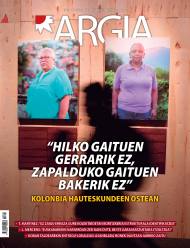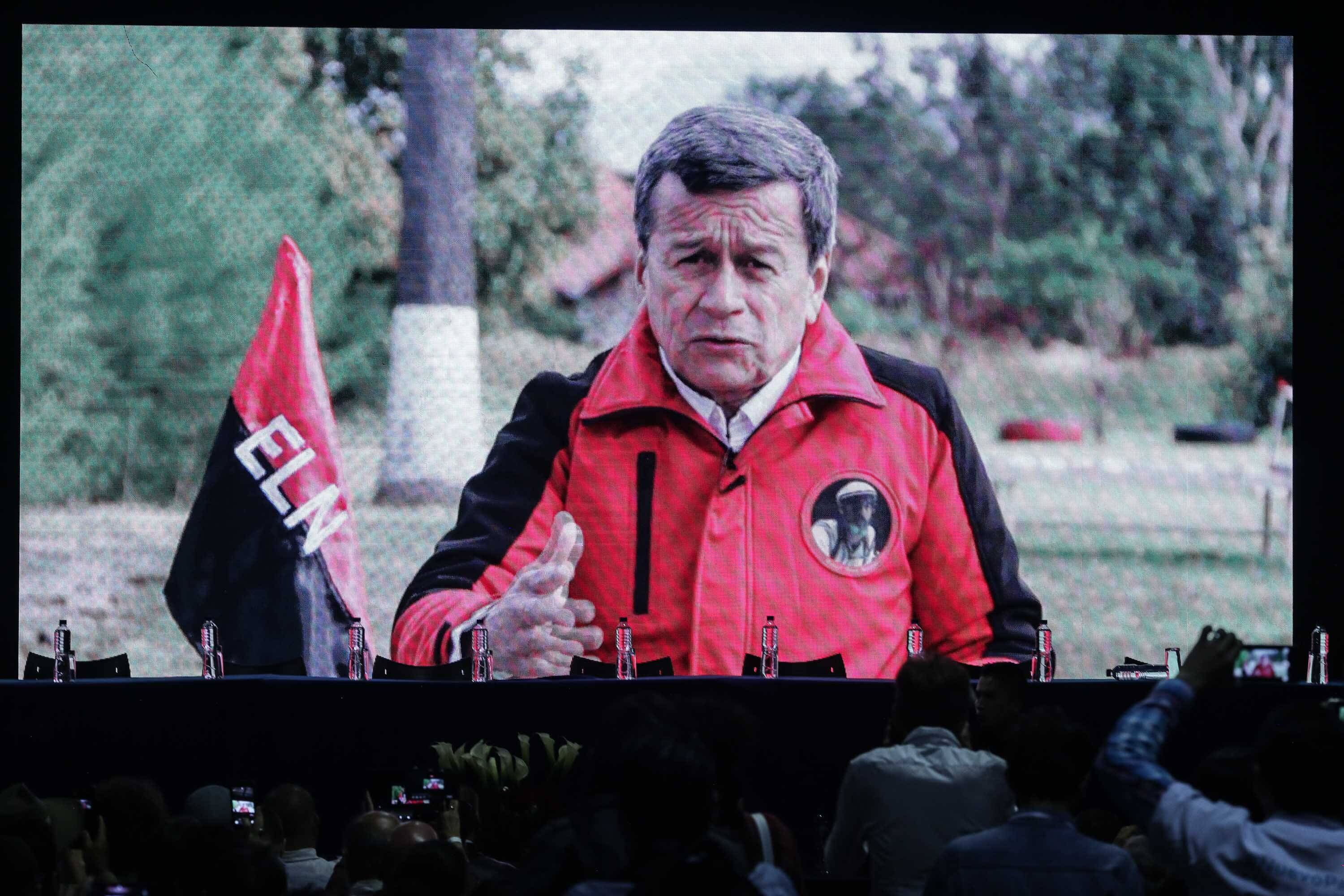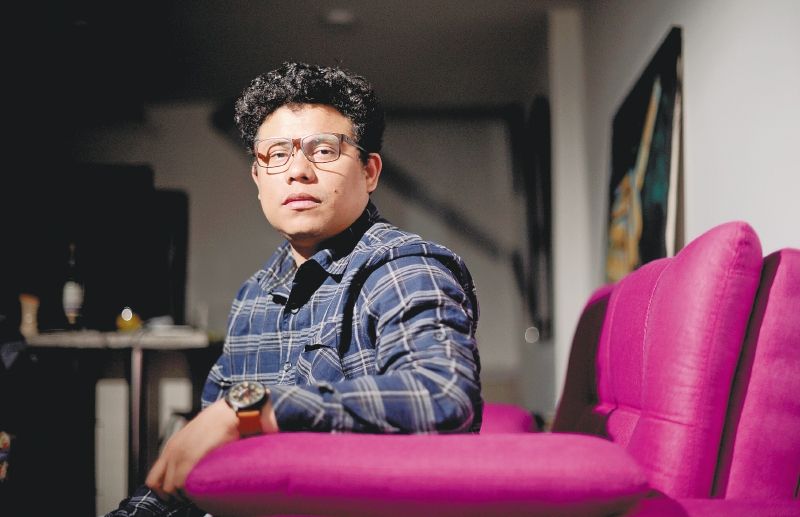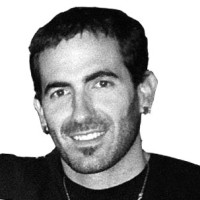The desire and powerlessness of peace
- Colombia is one of the nations that lives after the peace agreements, with the will to reach peace. The country is trying to give an appearance of normality, but violence has remained within it to date. The difficulties in complying with the conventions must now be added to the return of uribism, the main opponent of the negotiations, with the help of the new President Ivan Duque. For the time being, it has promised not to "crush" the peace agreement, but has warned that it envisages changes in it.

On the wall of the Memory House of Medellín, as soon as you enter the building, a text speaks of warning to the visitor: “There is no truth. There's no complete story. Everyone counts, from their point of view, the role they played. And when they cross, the stories transform, getting rich and getting entangled.” In short, it can be the metaphor of the whole of Colombia. Because in their geography they cross stories and stories, contradictory versions, sides and trenches, with their own voices and stories, getting entangled and confused in this new situation that wants to be peace. All of Colombia could enter the four walls of Medellín.
The Museum is the Memory House, but it also acts as a documentation center: it gathers hundreds of testimonies and voices as witnesses to the half-century war. The figures for panels and screens appear to be “incomplete”, so more than numbers, the words and images of the victims speak in the museum and cause a shiver. The unprotected visitor falls into the chaos of murder, rape, disappearances, torture, threats and fear. That is why one says that he has been there many times: “I’ve often seen people crying when I leave the museum.”
Although there is no joint report, the victims of the 60 years of conflict around eight million people are generally recognized. Among them, it is estimated that some 250,000 deaths, some 50,000 missing persons and about seven million people were forced to leave their homes because of gender-based violence.
All these realities have a place in the center of Medellin and appear in the shocking reports of the victims, in the photos, in the newspaper clippings. However, in a video in the room, the general sensations are turned around: people hug, laughing, crying with joy, and the other in joyful jumps. The images are from September 26, 2016, collected in Cartagena. The camera's focus is shown on the screen with President Juan Manuel Santos and guerrilla leader FARC-EP, Rodrigo Londoño, of Timochenko, both of whom were in white shirt and ballpoint, signing a peace agreement.
.jpg)
This gesture is followed by the current Colombia. After years of negotiations, the agreement between the government and the most representative guerrillas in all of Latin America brought hope to the country. The illusion lasted a week, in a referendum a few days after the signing in Cartagena, where 50.21% of Colombians rejected the Havana agreement. A few of ten won the "no". Santos, however, made some minor changes and maintained the agreements in force. The referendum, in any case, clearly showed the country ' s division and the size of the obstacles that the peace agreement was going to encounter should it prosper.
The Havana pact consists of five main
points: land reform, political participation, the end of the armed conflict, the replacement of drug crops and reparation and justice for the victims.
The first, on land ownership, collects 85 per cent of the budget allocated by the Colombian Government to the peace process, which technically represents one of the most difficult. It is estimated that the state should return the land to 230,000 families, which would force displaced citizens to return to their homes. The clarification of land ownership, however, leads to great legal and bureaucratic chaos, and the process is going very slowly. And what is worse: the situation has exacerbated the conflicts around the land; between 2016 and 2018, more than 200 activists of the popular movement have been killed: most were activists for a fair distribution of land and against illegal mining.
.jpg)
The demobilisation of the FARC has also led to power competition in the areas controlled so far by the guerrillas. The ELN guerrilla, which is negotiating with the government in tortuous peace negotiations, is led by paramilitaries and drug-trafficking groups, who are fighting to take control of these areas.
The situation, incidentally, further complicates the fourth point of the peace agreement, which is the replacement of drug crops. The cocaine business has historically been one of the axes of the conflict in Colombia. The State undertook, through the Peace Convention, to grant aid to farmers who have worked in the production of coca plants, so that the latter could replace cultivation and cultivate other crops. However, aid is slow to arrive or is not forthcoming, and the peasant leaders fighting for substitution are confronted with the weapons of drug traffickers and paramilitaries.
The point of support for political participation has led the institutions to which the FARC was guerrilla, abandoning weapons but maintaining its acronyms as a political party. The first legal participation, however, has highlighted the lack of support it has in society. As a result of the peace agreement, the former guerrillas have ten seats in Parliament, five in the House of Representatives and five in the Senate. However, the members of the FARC presented themselves last March to the legislative elections held with the aim of expanding this representation. In vain: the party only got 0.34% of the votes. Shortly afterwards, they decided not to participate in the presidential elections, claiming the campaign’s attacks and the poor state of health of presidential candidate Timochenko, which has been rejected.
In any case, the third and fifth point of the peace agreements has been the one that has given rise to the most responses. The section on the end of the conflict refers to truce, demobilization and disarmament on both sides. The point of repairing the victims has to do with what has been called transitional justice and with the committees set up to bring the whole truth to light. In these two scenarios, the most conservative sectors in Colombia have seen the State surrender and impunity for the guerrillas. In addition, the Truth Commission has put some people in trouble so it can bring about state abuses. For all these reasons, uribism took the lead in the fight against the peace agreements. Until then, an unknown person ran the opposition. His name was Ivan Duque.
.png)
On June 17, the second round of the presidential elections in
Colombia was held and, with the results in hand, Ivan Duque, candidate of the Democratic Center, will be the president of the Republic. The right has no long history, but the fact of being the candidate supported by former President Álvaro Uribe has opened the doors of power wide open to her. Uribism is a strong political movement emerged around the former leader, which brings together right-wing sectors and economic elites. The harsh repression of the guerrillas promised during his mandate sounded Uribe in broad sectors of Colombian society, but that same policy also brought him an absolute rejection on other occasions. There are many voices that link it to human rights violations, including the murders of civilians presented as guerrillas, and drug trafficking.
However, Uribism has shown that he is well and has put his candidate for the presidency of the country. Now it remains to be seen what it will do with the peace agreements. Duque made himself known as a firm voice opposed to the agreement, but the discourse has been softened in recent times. Being elected president, he has promised “arrangements” and has promised to build a peace for all Colombians and Colombians.” However, he wanted to make it clear that he will not “crush” the peace agreement, and there is something: with its ups and downs, the desire for peace has been so strongly rooted in Colombian society that neither the most reactionary sector can oppose it.
In any case, there is no doubt that: The victory of Duque, rather than a push, will be another obstacle to a peace process that has so far been fragile and unprecedented. To the technical difficulties, to the limited political will and to the violence that does not disappear, a new element is added: the return of uribism, eight years later.

The left, more than ever Election
Day in Santa Marta. In the third city on the Caribbean coast, in the first round of elections, citizens are voting. At the location authorized for the campaign, near the city center, the members of Colombia Humanity are monitoring the votes. In the coalition organized around the left-wing candidate, Gustavo Petro, they live the day with illusion. The coordinator of the local campaign – he prefers to keep the name for fear of aggression – has a clear bet: “Petro’s is the best program, both in education and in health, in economics or against climate change. It's the alternative. It’s a peacemaker and wants people to have opportunities, because as long as people don’t have opportunities there will always be war and violence.”
Petro has not achieved the Presidency, but he has achieved the best results from a left-wing candidate who has never achieved the Presidency. It was approaching the second straight round, but on the face to face it has almost doubled the votes, exceeding the barrier of EUR 8 million (41.81%). The result is historic: for example, Santos achieved his second term with fewer votes. And until recently, no one would expect that from the left.
The Colombian left, in fact, has never had it easy. There are a number of reasons. The action of Gerrilla, on the one hand, has always been furtive on the civilian left, and the leftist parties have acted with the stigma of the armed bands on the back. The Venezuelan closeness has also allowed the right to build a perfect enemy, presenting the Bolivarian system as a source of all evils, and the Colombian left, directly, linking with the neighboring country. Moreover, it is a conservative, Colombian, religious society and linked to tradition, which has hindered the defense of progressive policies. And yet, when it has faced all the obstacles and been strong, the left has stumbled upon state repression and paramilitary violence. The killings of progressive candidates (Jorge Elizar Gaitán, Luis Carlos Galán, Jaime Pardo Leal...) and the massacre against the Unión Patriotica party, which killed nearly 5,000 militants in the 1980s and 1990s, are the highest exponents of this persecution against the left.
.jpg)
Gustavo Petro has faced all these obstacles. As a former member of the M-19 guerrilla, criticism of him has been ongoing on the part of those who wanted to unite the left and the guerrillas. For his part, the enemies accuse him of trying to bring the Venezuelan model to Colombia, at a time when thousands of Venezuelans arrive from the neighboring country.
And yet whoever was mayor of Bogotá has managed to form a solid candidate. Petro has laid the foundations for social justice and wealth sharing in a country with the greatest social inequalities and, by ordering the defence of peace agreements, has brought with it many of those who voted in favour of the peace process in the 2016 plebiscite. Furthermore, it has denounced corruption at all costs and has called for the renewal of the democratic system, making it the candidate of those who live with a desire for change. In the end, Petro has won two million votes less than Duque, but he has left the left in the best position in his history, with options to influence the political system and be a protagonist in the forthcoming elections. At the moment, the candidate has promised strong opposition, both in the institutions and on the street, among other things. And he has sent a clear message to uribism: “The eight million who voted for us are not going to allow them to return to war.”
Very close to
Santa Marta, hanging on the slopes of Sierra Nevada, Minca welcomes those fleeing the heat of the coast. It has become a major tourist hub in a few years. Most of the village’s houses are housed, and anyone who does not search for them will find no trace of their past. Until a few years ago, however, paramilitaries dominated the village. They invaded the land of the peasants and seized it, imposing command and killing those who resisted. Every night, when the fog of the jungle spreads, Minca appears covered by a white fabric. It's like I'm protecting it from the past.
The same is true in other places in Colombia: there is no talk of conflict, perhaps because of the desire to forget it, perhaps because it is not yet possible. The country has taken advantage of a relative moment of peace to increase the number of visitors and is on the way to becoming a tourist power. The risk is that the presumed fog of normality will cover what has happened. Loss of truth behind the postcard.
Perhaps for that reason, a phrase of long meters is the last one the visitor reads before leaving the Casa de la Paz in Medellin: “Not a war that kills us, not a peace that crushes us.” Recalling, in a way, that peace is not a lack of war or that there will be no peace while the reasons that led to the war remain. Memory, at least, exists. This is the name of the Medellín building. And there was a whole country in it.
2019an Ivan Duqueren Kolonbiako Gobernuak bake elkarrizketak apurtu arren, ELN erakundeko gerrilari talde batek bakegintzan lanean dihardu Kuban. Habanatik erantzun dizkigu galderak Askapen Nazionalerako Armadaren Komando Zentraleko kide eta negoziazio taldeko buru Pablo... [+]
Kolonbiako Gobernuak hartutako erabaki batek hautsak harrotu ditu berriki: Jorge Rodrigo Tovar aukeratu dute biktimen koordinatzaile kargurako, Jorge 40 ezizenez ezagutzen den buruzagi paramilitarraren semea. Haren agindupean torturatu eta hil zituzten biktimen familien samina... [+]
























